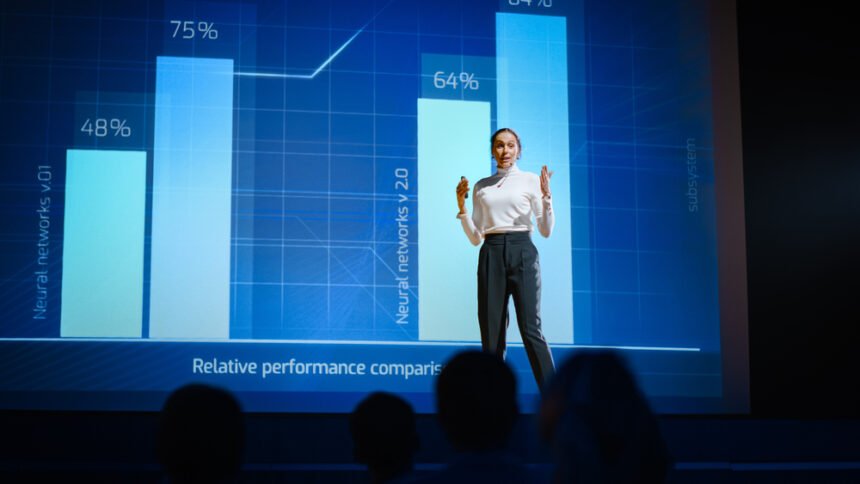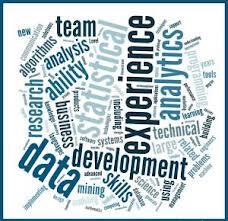For most entrepreneurs, the best way to make money is to find ways to work smarter and not harder. While different companies, regardless of their size, have different operational processes, they share a common need for actionable insight to drive success in their business. Advancement in big data technology has made the world of business even more competitive. The proper use of business intelligence and analytical data is what drives big brands in a competitive market.
Business intelligence is simply a tool, computer software, and practice used to collect, integrate, analyze, and present raw business data that can be used to create actionable and informative business data. If you occasionally run business stands in fairs, congresses and exhibitions, business stands designers can incorporate business intelligence to aid in better business and client data collection.
Business intelligence tools can include data warehousing, data visualizations, dashboards, and reporting. These tools can be used to give insight that can be used to drive business growth. They can also solve urgent issues, collect the data in one location, and even forecast possible future business outcomes based on the collected data.
You need to know how to use business intelligence effectively in this field. This includes knowing which BI tools to use.
Why you should use business intelligence for fairs, congresses, and exhibitions
The only way to reach your business goals is to have access to insight into your business. This eliminates guesswork when coming up with business strategies.
Make better business decisions
Business intelligence tools empower your business decision-making process by combining different sets of data. This makes it easier for you to draw clear conclusions about the most common issues and pain points for your clients. This data can also make it easy for you to know where and why you might be losing clients. This way, you can make appropriate and accurate changes to your strategy and product based on the findings.
Boost revenue
Business intelligence makes it possible for you to predict business behavior. This makes it easy to determine the information your clients are most interested in different stages, making it possible for you to harness the power presented by big data. Business intelligence tools combine data from different sources, and this makes them ideal for identifying user behavior trends.
With this insight, you can decide how best to maximize client engagement while encouraging them to become part of the conversation.
Boosting efficiency
When you decide to go the old school way and analyze business data from a spreadsheet, you greatly increase the error margin. Something as simple as leaving a symbol in a formula can lead to inaccurate results, creating inaccurate business numbers. This process is also time-consuming, especially when working with multiple data sets.
Business intelligence tools have the ability to visualize and automate queries to save time while reducing errors. This way, you can come up with conclusions from the data faster.
The best business intelligence tools today
To enjoy the benefits offers by business intelligence, you need to pick the best tools for your business. Here is a comprehensive review of the best business intelligence tools to narrow down your search.
Looker
This is a self-service analytical platform for business users. Once your analytics team gets it up and running, it can be easy to use by anyone in your business. It comes coded in LookML, an SQ-like language that requires learning to set up. Once it is up and running, business users can explore business data with ease, even without much training. Analysts like LookML because of how easy it makes debugging and version control.
Main features include the ability to access and operationalize data through the LookML library. It also allows you to create your data and creating consistent dataset definitions using LookML. You can connect Looker to other solutions through the Looker R SDK. It comes with embedded dashboards privately and publicly.
Tableau
This is one of the most developed business intelligence tools in the market that comes packed with high-end data analytics and visualization features. This high-end data visualization makes data exploration more accessible to end-users. If you are a first-time user of Tableau, you will need to undergo short training to be able to use the tool.
The best part about Tableau is the easy-to-use drag-and-drop user interface that makes it easy to create in-depth analysis and dashboards. You will be able to query, visualize, and connect business data without the need to write code. It allows you to set up report subscriptions and alerts that are easy to share throughout the company.
Tableau is the right tool for creating rich, in-depth analytics or dashboards that can be optimized for tablets, phones, and desktops.
Sisense
Formerly known as Periscope, Sisense is a business intelligence tool ideal for cloud data teams. With this tool, analysts are able to visualize complex data models in Python, SQL, and R. it offers data connectors, visualization layers, and hosting all in one package, making it ideal for teams that are data-driven with limited resources. It also comes with data caching capabilities that enable fast querying.
Sisense makes it possible for business users to analyze data while gaining insight by availing it in plain language on top of these amazing features. This way, users can create simple dashboards using the ready templates available.
With Sisense, you can run, save, and share multiple rows of data in seconds. It allows exploring data and performing simple aggregations and calculations, supporting the creation of rich visualization, and sharing of dashboards on the drag-and-drop user interface.
PopSQL
This highly flexible and modern SQL editor comes bundled with an easy-to-use, attractive interface. It is made for use by analysts and offers an optimized SQL editing experience to facilitate fast coding. It comes with organizational features that support working in a large team, including metadata for tables. The availability of audit logos, on-premises options, and team support makes PopSQL the best option for your team.
PopSQL allows you to write SQL using an auto-complete feature supported by your data log. You can also auto-refresh and send report updates on important metrics to stakeholders, and you can save common queries in a library for later use.
Business intelligence makes it possible for business analysts to make decisions based on evidence. This is thanks to the availability of the above-mentioned business intelligence tools. This way, businesses can better understand their clients and create more effective ways of engaging with them.









